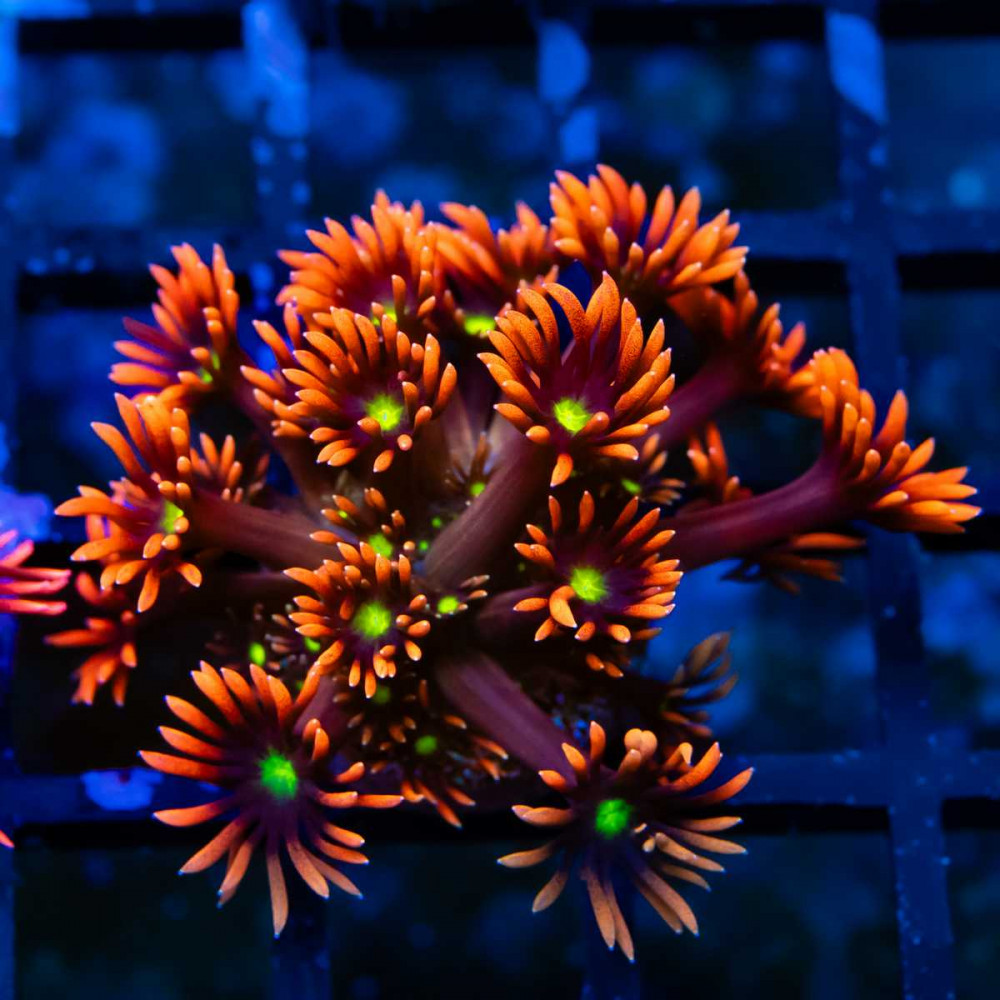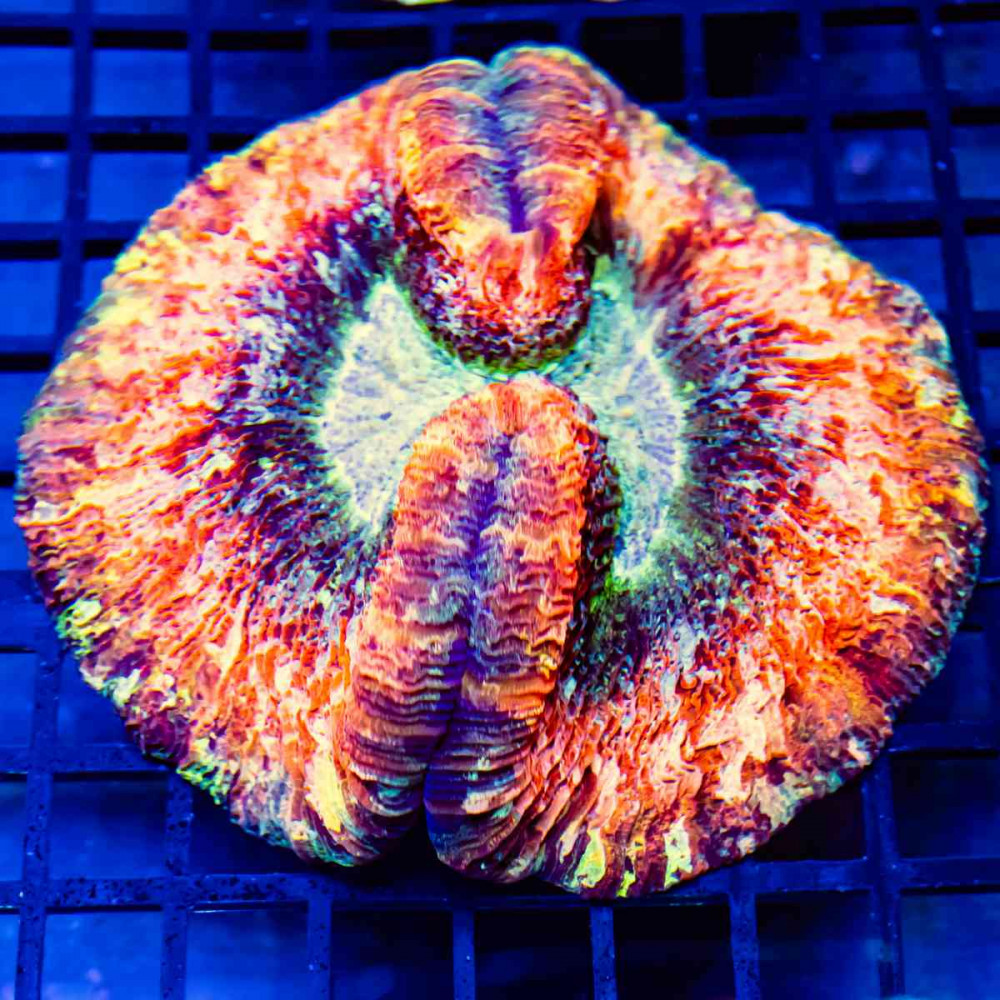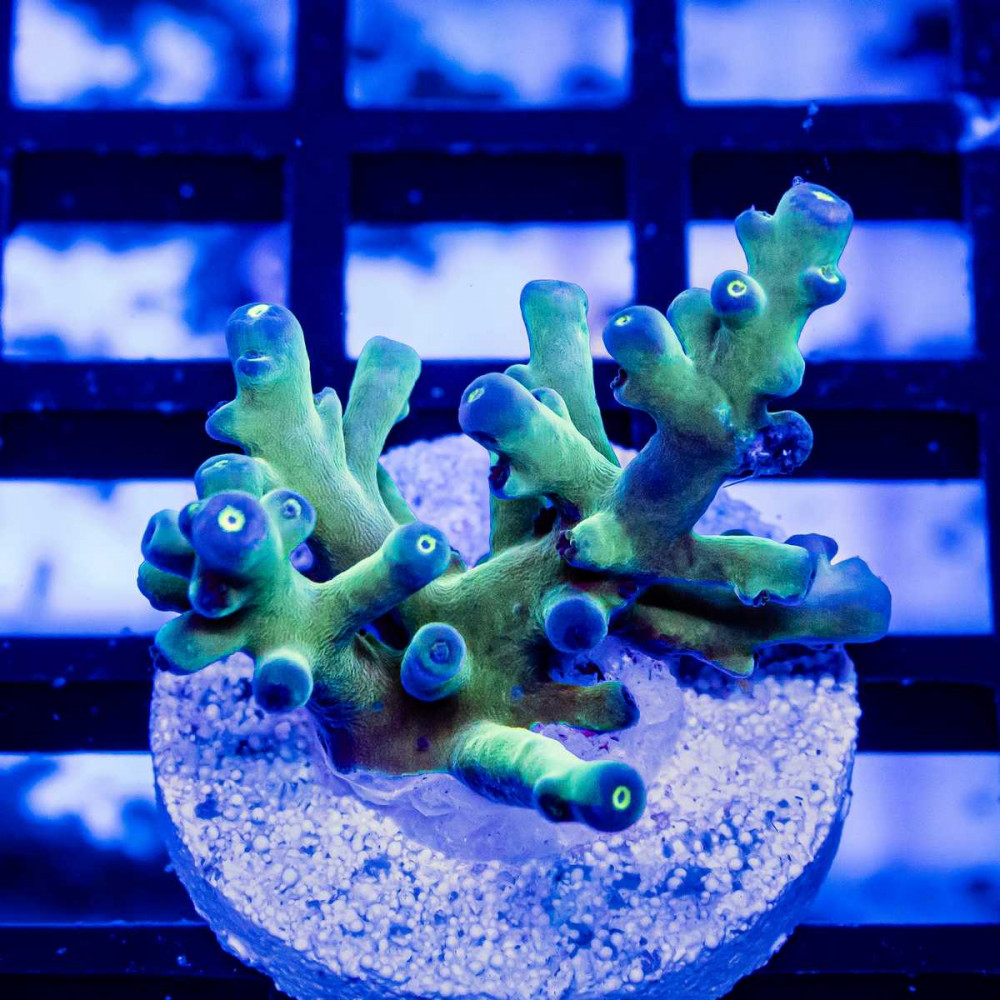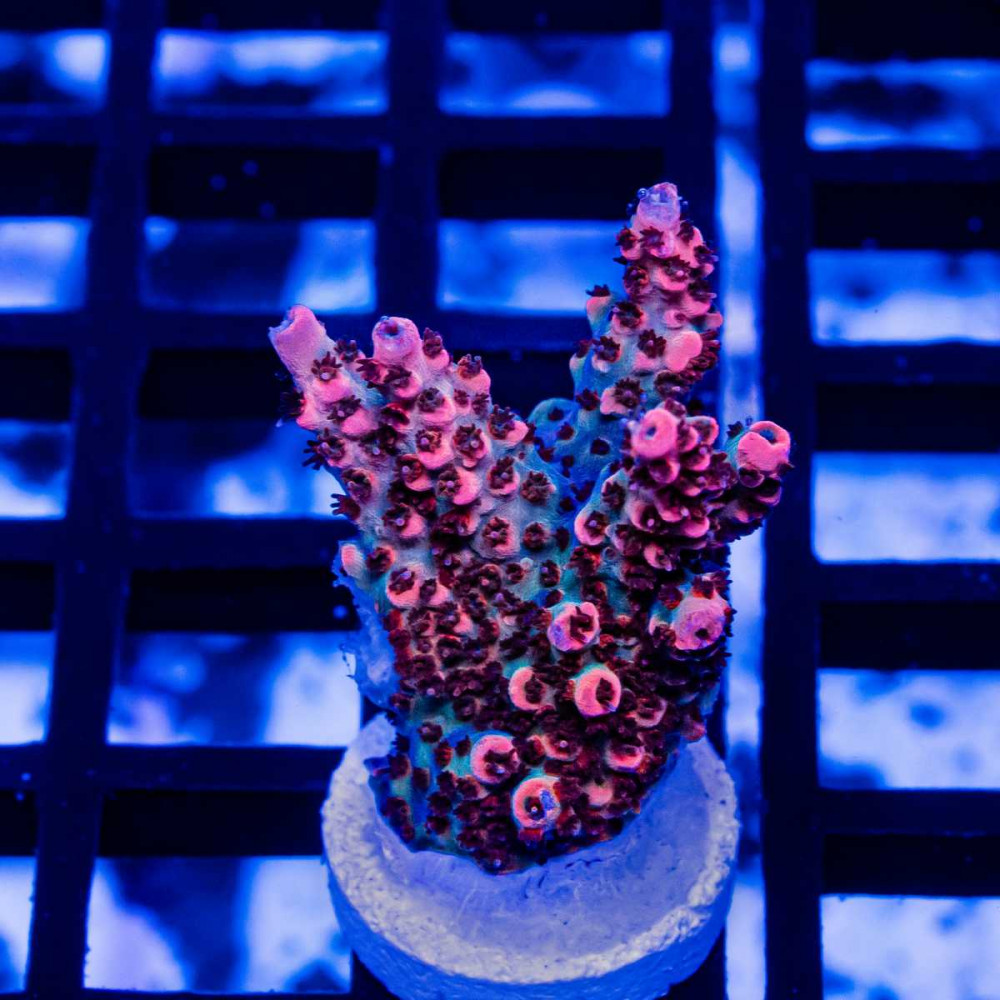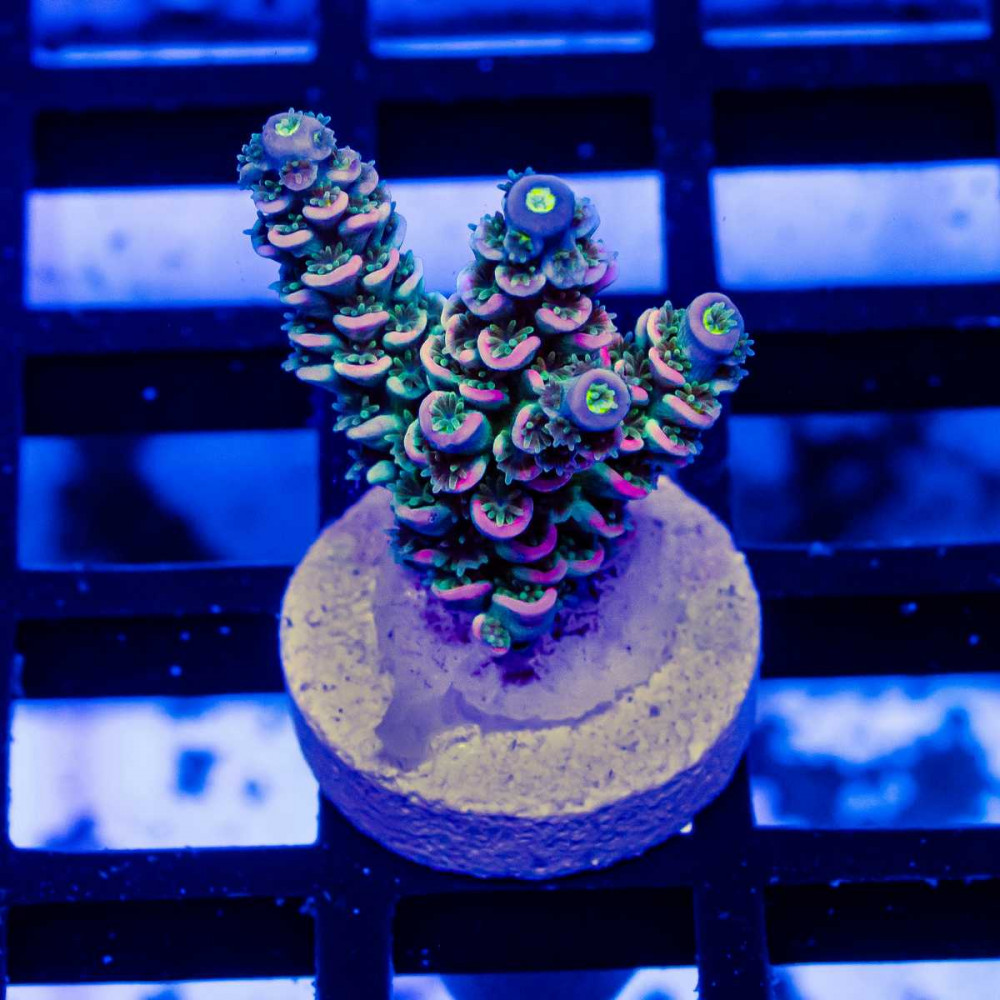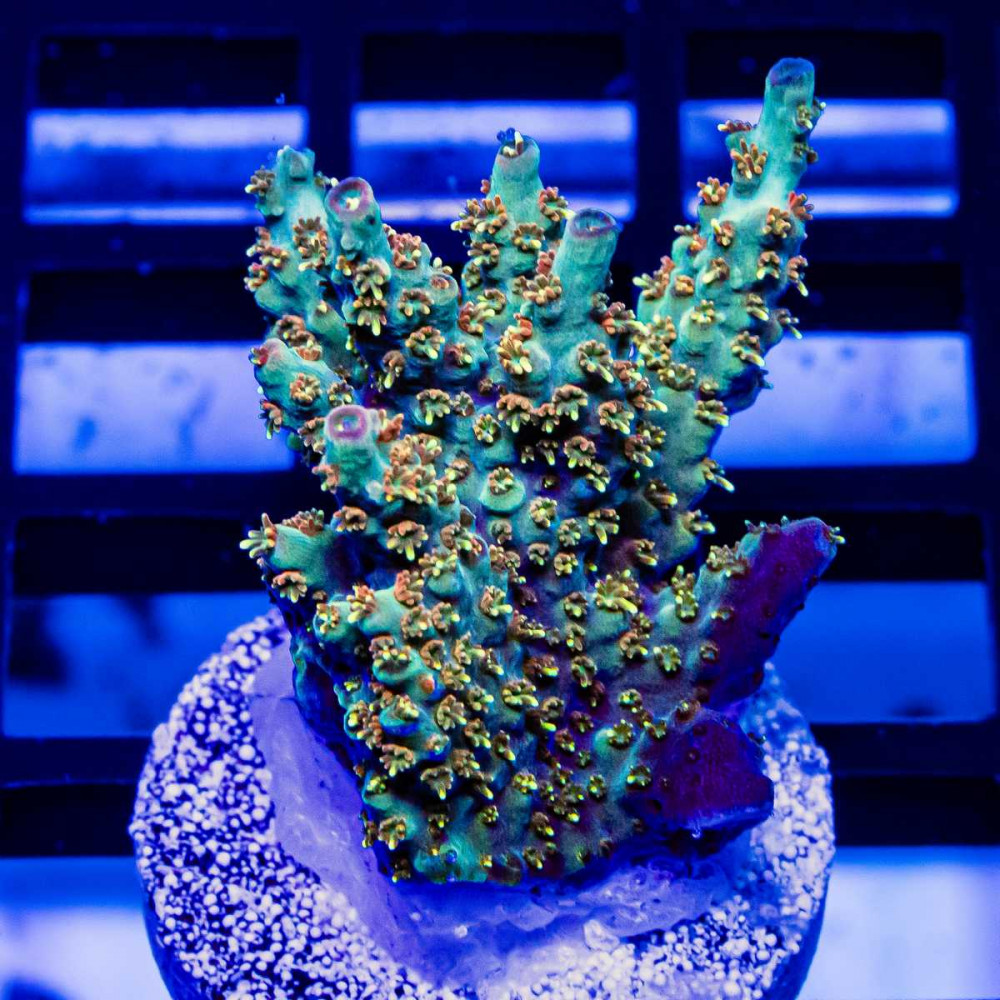Care Level : Moderate
Temperament : Peaceful
Color : Black, Green, Orange, Red, White
Diet : Carnivore
Reef Compatible : Yes
Water Conditions : sg 1.020-1.025, 72-78° F, dKH 8-12, pH 8.1-8.4
Max. Size : 11"
Origin : Indo-Pacific, South-east Asia and Micronesia
Family : Labridae
Minimum Tank Size : 125 gallons
The Marble Wrasse (Halichoeres Hortulanus), also known as the Checkerboard Wrasse or Hortulanus Wrasse, has a distinct and unique black and white checkerboard patterning rightfully earning its name.
Overall they have the long thin shape of the Halichoeres family with a pointy nose. At juvenile stage, this wrasse has a white silvery background color with three black and dark red vertical patchs from back head, middle of the body and on the caudal peduncle. With maturity, it becomes silver with a distinctive black checkerboard pattern on the body. The dorsal fin and tail are yellow, and the face is light green with orange to pink striped markings. With age the body of the fish darkens a greenish or blue color and the pink stripes darken slightly. They have an adult size of about 11".
The Marble Wrasse is hardy, active and useful fish. A 125 gallon or larger aquarium with a sealed lid, a 2-3 inch sandy bottom to hide under if frightened, and other peaceful wrasses, including its own species, is a suitable environment. This Wrasse prefers to be added to well established aquariums with a sandy substrate and lots of rockwork. Wrasse are considered jumpers make sure your aquarium has a tight-fitting canopy or screen cover to prevent the Wrasse from jumping out of your aquarium.
This is an active species that generally coexists well with other peaceful species. It may be aggressive with other wrasses. In the tank, it will eat fireworms and pyramidellid snails, protecting corals and clams which it will not bother. However, larger specimens may prey on smaller ornamental shrimp and crabs.
They are all born as females and dependant on social cues are able to change into males. Usually in any given area there are numerous females and a single male. If the male disappears for any reason the largest female in the area will usually change into a male.
The Halichoeres Hortulanus diet should include vitamin enriched frozen mysis shrimp, vitamin enriched frozen brine shrimp, and other meaty foods along with a high quality marine flake and marine pellet food. Feeding them multiple times a day is recommended as they are very active and keeping them full will help keep them away from desirable inverts.
Size: Small 1-3/4" to 2-1/4", Medium 2-1/4" to 3-1/2", Large 3-1/2" to 5"
-
No questions yet
You watched
New goods
Subscribe to news and get a 5% discount on your first order using the promo code.
You will receive the promo code by email immediately after subscribing.
You can apply the promo code after registration and authorizatio








